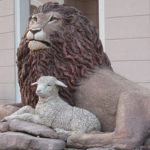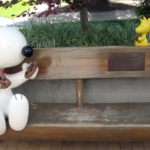Posted: 9/29/06
2nd Opinion:
Associations to celebrate milestone
By Stephen Parks & Lynn Parks
Next year marks the 300th anniversary of the first Baptist association in America, Philadelphia Baptist Association, formed in 1707. Baptists created associations to establish doctrinal parameters and fellowship with like-minded believers. Associations provided advice on Baptist practices, helped churches find credentialed ministers and safeguarded doctrinal and ethical integrity. They enabled churches to cooperate geographically in mission, educational and benevolence ventures. For example, Philadelphia Association started Brown University. Philadelphia Association has been the prototype for Southern Baptist associations and conventions since 1707.
By the late 1700s, associations focused on mission work, and new churches sprung up all along the Atlantic seaboard and even west of the Alleghenies. In 1792, in England, William Carey proposed his association send Baptist missionaries to “heathen” populations, and the modern missionary movement was born.
Eventually, Baptists realized they needed larger networks to support expanding mission and benevolence projects. One avenue, missionary societies, received support primarily from individuals. The other avenue was larger associations of churches. So, three associations in South Carolina sent delegates to form the first state convention in 1821. In 1845, the Southern Baptist Convention was formed. Since that time, Southern Baptists have followed the model of cooperation established by associations rather than a societal model.
For more than a century, Baptist work in America had been carried on by churches working together through associations. The advent of state conventions and the Southern Baptist Convention caused many associations to focus on supporting the larger conventions. Many associations came to depend heavily on conventions during the hard times after the Civil War, and as a result, associations largely became promoters of convention initiatives, especially missions. Helping coordinate cooperative efforts between associations and the denomination were “missionaries” or “agents,” forerunners of today’s associational directors of missions. The tendency toward centralization intensified when associations were left out of the funding mechanism of the Cooperative Program in 1925. Missionaries serving associations or districts usually received support, at least in part, by national or state conventions, building a loyalty to promote those causes.
The 1963 Conference on Associational Missions and the 1974 National Convocation on the Southern Baptist Association helped return the focus of associations to fellowship and cooperative efforts among churches in each association, rather than associations primarily as promoters of convention initiatives. These meetings reaffirmed the autonomy of the association and recognized the director of missions as a full member of Southern Baptist mission efforts. Since these two meetings, many associations have experienced renewed vitality in fellowship, meeting the needs of churches and local mission efforts.
When the “conservative resurgence” began in the SBC in the late 1970s, some associations were drawn into the dispute. For example, in some states, when there was a perception that the existing state conventions and associations did not support the SBC enough, new entities were started. The new SBC-aligned Southern Baptists of Texas Convention is an example, and in some places in Texas, new associations have been started among exclusively SBTC churches. However, almost all existing associations have demonstrated that focusing on fellowship, purpose and missions can overcome “political” divisions.
Since Philadelphia Association formed in 1707, many associations have formed, including more than 1,100 associations historically related to the Southern Baptist Convention. For three centuries, the association has remained the most effective Baptist entity for doctrinal accountability, ongoing fellowship and encouragement, local mission and ministry efforts, and communication among churches. There is almost universal recognition that “if national and state conventions ever cease to exist, the local association will still be functioning.”
U.S. Baptist associations will celebrate the 300th anniversary of associations in America in a variety of ways, including a celebration rally in San Antonio June 10, 2007. Paul Stripling, former director of missions for Waco Baptist Association, has written a wonderful historical overview, Turning Points in the History of Baptist Associations in America. For more information on the rally and the book, see the www.sbcadom.net website.
Stephen Parks is chairman of the 2007 Celebration Taskforce for the Southern Baptist Conference of Associational Directors of Missions and is director of missions for Unity Baptist Association in Lufkin. Lynn Parks is director of academic programs at Texas State Technical College in Waco. They are brothers.














We seek to connect God’s story and God’s people around the world. To learn more about God’s story, click here.
Send comments and feedback to Eric Black, our editor. For comments to be published, please specify “letter to the editor.” Maximum length for publication is 300 words.